LncRNA HOTAIR Interaction With WTAP Promotes m6A Methyltransferase Complex Assembly and Posterior Capsule Opacification Formation by Increasing THBS1
- PMID: 40341312
- PMCID: PMC12068528
- DOI: 10.1167/iovs.66.5.20
LncRNA HOTAIR Interaction With WTAP Promotes m6A Methyltransferase Complex Assembly and Posterior Capsule Opacification Formation by Increasing THBS1
Abstract
Purpose: To explore the role of long non-coding RNAs (lncRNAs) and N6-methyladenosine (m6A) in posterior capsule opacification (PCO) and their underlying mechanisms.
Methods: The localization of lncRNAs and proteins was analyzed using fluorescence in situ hybridization and immunofluorescence staining. RNA m6A quantification, RNA immunoprecipitation, co-immunoprecipitation, MeRIP-seq, MeRIP-qPCR, western blotting, wound healing, and Transwell assays were applied to elucidate the underlying mechanisms.
Results: The levels of lncRNA HOX transcript antisense intergenic RNA (HOTAIR) and m6A methylation increased significantly during epithelial-mesenchymal transition (EMT) in lens epithelial cells (LECs). HOTAIR promoted EMT and m6A methyltransferase activity but had no effect on methyltransferase activity and was not modified by m6A. Nevertheless, HOTAIR interacted with WT1-associated protein (WTAP), a key m6A writer protein, facilitating WTAP-mediated recruitment of METTL3-METTL14 heterodimers and enhancing m6A modification. The HOTAIR/WTAP complex elevated m6A levels, thrombospondin 1 (THBS1) expression, and EMT in LECs.
Conclusions: LncRNA HOTAIR enhances the assembly of the WTAP/METTL3/METTL14 complex and promotes EMT in LECs by upregulating m6A modification and THBS1 expression. Targeting the HOTAIR/WTAP/THBS1 pathway may prevent or treat PCO.
Conflict of interest statement
Disclosure:
Figures
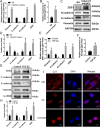

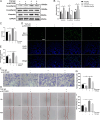
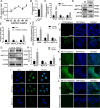


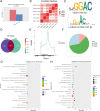



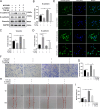

Similar articles
-
METTL3 regulates m6A in endometrioid epithelial ovarian cancer independently of METTl14 and WTAP.Cell Biol Int. 2020 Dec;44(12):2524-2531. doi: 10.1002/cbin.11459. Epub 2020 Sep 11. Cell Biol Int. 2020. PMID: 32869897
-
Bit1-a potential positive regulator of epithelial-mesenchymal transition in lens epithelial cells.Graefes Arch Clin Exp Ophthalmol. 2016 Jul;254(7):1311-8. doi: 10.1007/s00417-016-3357-3. Epub 2016 Apr 28. Graefes Arch Clin Exp Ophthalmol. 2016. PMID: 27122244
-
N6-methyladenosine modification of THBS1 induced by affluent WTAP promotes Graves' ophthalmopathy progression through glycolysis to affect Th17/Treg balance.Autoimmunity. 2025 Dec;58(1):2433628. doi: 10.1080/08916934.2024.2433628. Epub 2024 Dec 17. Autoimmunity. 2025. PMID: 39689341
-
Role of WTAP in Cancer: From Mechanisms to the Therapeutic Potential.Biomolecules. 2022 Sep 2;12(9):1224. doi: 10.3390/biom12091224. Biomolecules. 2022. PMID: 36139062 Free PMC article. Review.
-
Human m6A writers: Two subunits, 2 roles.RNA Biol. 2017 Mar 4;14(3):300-304. doi: 10.1080/15476286.2017.1282025. Epub 2017 Jan 25. RNA Biol. 2017. PMID: 28121234 Free PMC article. Review.
References
-
- Liu YC, Wilkins M, Kim T, Malyugin B, Mehta J. Cataracts. Lancet. 2017; 390(10094): 600–612. - PubMed
-
- Milazzo S, Grenot M, Benzerroug M.. Posterior capsule opacification. J Fr Ophtalmol. 2014; 37(10): 825–830. - PubMed
-
- Sen P, Kshetrapal M, Shah C, Mohan A, Jain E, Sen A. Posterior capsule opacification rate after phacoemulsification in pediatric cataract: hydrophilic versus hydrophobic intraocular lenses. J Cataract Refract Surg. 2019; 45(10): 1380–1385. - PubMed
-
- Cinar E, Yuce B, Aslan F, Erbakan G. Influence of Nd:YAG laser capsulotomy on toric intraocular lens rotation and change in cylinder power. J Cataract Refract Surg. 2024; 50(1): 43–50. - PubMed
MeSH terms
Substances
LinkOut - more resources
Full Text Sources
Miscellaneous

